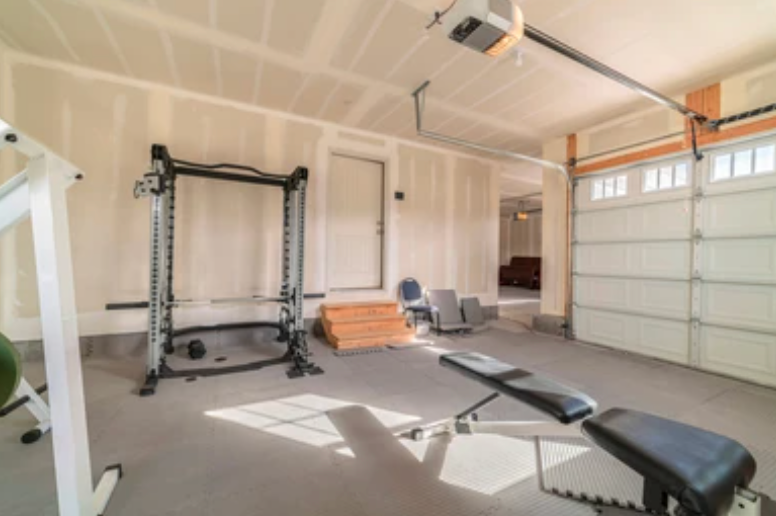
Hey there, fitness enthusiasts and space-savvy planners! Have you ever peeked into your garage and pictured more than just a car and some old boxes? What if I told you this often-underused space could be your ticket to fitness freedom? That’s right – we’re talking about transforming your garage into a gym, a trend gaining serious traction.
In this age where convenience is king, and personal health is a top priority, the idea of a home gym has shifted from luxury to necessity for many. But why the garage, you ask? It’s more than saving on gym memberships or avoiding crowded workout spaces. It’s about crafting a personalized fitness sanctuary steps away from your living room.
In this post, we’re diving deep into garage gyms. Whether you’re a seasoned athlete looking for a training haven or a fitness newbie setting up your first squat rack, we’ve got you covered. We’re here to guide you through everything from budgeting your garage gym journey to maximizing every inch of space. So, roll up your sleeves (and maybe that garage door), and let’s embark on this exciting journey to create your home fitness paradise!
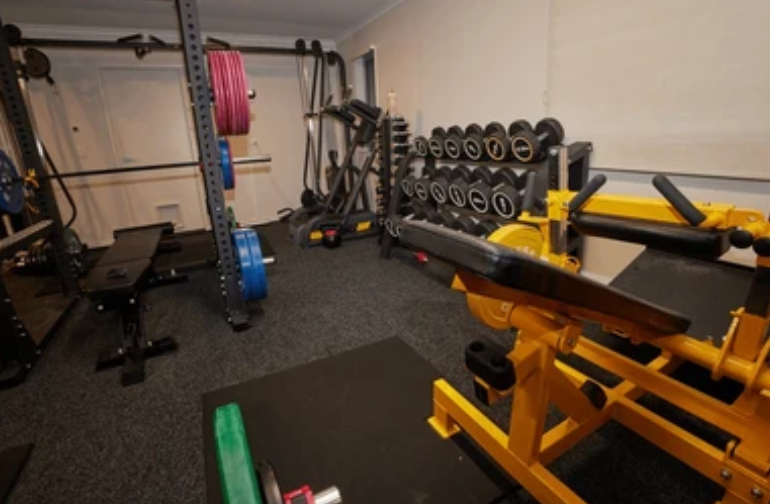
Why Should You Consider a Garage Gym Over a Gym Membership?
So, you’re pondering whether to keep that gym membership or take the plunge into setting up your garage gym? It’s a decision many face, and honestly, the scales are tipping more towards home setups these days. Let’s chat about why turning your garage into a workout haven is one of your best decisions.
Personalized Space Just for You: First, imagine having a space entirely yours. In your garage gym, you’re the boss. You can blast your favorite tunes, arrange the equipment just how you like it, and never wait for someone to finish their set on the squat rack. It’s your fitness sanctuary, tailored to your preferences and goals.
Time and Convenience: Think about the time you spend packing your gym bag, traveling to the gym, waiting for equipment, and then making the trip back home. With a garage gym, you cut all that out. You can walk into your garage and start working out. This convenience means you’re more likely to stick to your fitness routine, especially when motivation is low.
Cost-Effective in the Long Run: Setting up a home gym requires an upfront investment. But add up those monthly gym fees, travel costs, and the occasional extra charges (like those smoothies or protein bars you buy), and you’ll realize that a home gym can be more cost-effective over time. Quality gym equipment can last for years, making it a worthwhile investment.
Customized to Your Fitness Journey: Whether you’re into weightlifting, cardio, yoga, or a mix of everything, your garage gym can be equipped exactly how you need it. You can use the machines and weights your local gym offers. Want a power rack, a rowing machine, or a space for yoga and meditation? You got it!
Health and Hygiene: In your garage gym, you know strictly who’s used the equipment and how clean it is. In the era of heightened health awareness, having your own space means keeping it as pristine as you like without worrying about germs or the cleanliness standards of public gym spaces.
Family Fitness: If you have a family, your garage gym becomes a health and fitness place for everyone. It’s a fantastic way to introduce your kids to exercise or have your partner join in for a workout session. It’s about building a healthy lifestyle right at home.
No More Weather Worries: Rain or shine, your workout routine remains unaffected. The garage provides a sheltered, climate-controlled environment where you can exercise peacefully, regardless of outside weather.
In conclusion, while gym memberships have their perks, the benefits of a garage gym are hard to overlook. It’s about convenience, personalization, and creating a space that aligns with your fitness journey. So, why not make your fitness routine more personal, convenient, and tailored to your needs? Your garage is not just a place to park your car; it could be the starting point of your next fitness adventure!
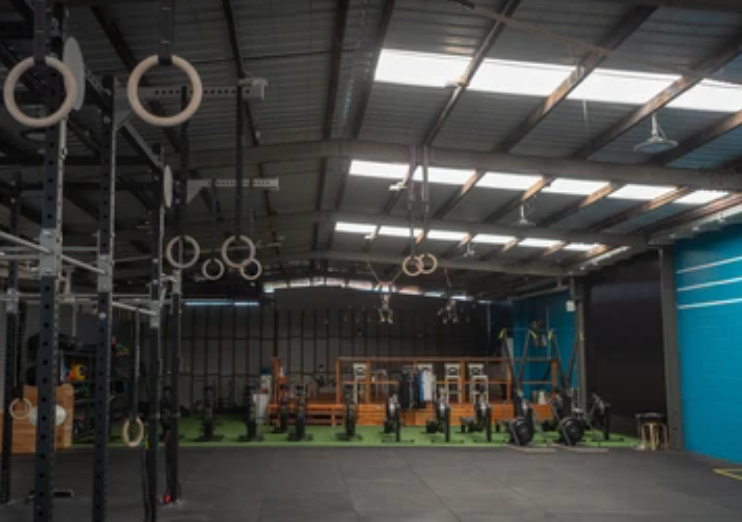
What's the Financial Scope of Crafting a Garage Gym?
Are you pondering the idea of converting your garage into a fitness oasis? Let’s talk numbers and navigate the cost landscape of setting up a personal garage gym. Whether you’re eyeing a full-blown garage home gym or a more modest half-garage gym, the investment can vary, but it’s all about smart choices.
Laying the Groundwork – Gym Flooring: A crucial first step in your home gym setup is getting the right flooring. Horse stall mats are a popular, budget-friendly option, offering durability and a better grip for those intense workouts. For a standard-sized garage, you’re looking at an investment of around $100 to $400. This ensures your floor space is well-protected and workout-ready.
Equipment – The Heart of Your Gym: This is where your garage gym ideas come to life. A basic setup with essentials like a squat rack, bench press, barbell, and weight plates might cost $500 to $1,000. The cost can escalate if you’re aiming for a more comprehensive setup with power racks, bumper plates, and an adjustable bench. Remember, you don’t need to buy as much equipment as commercial gyms; focus on what aligns with your fitness goals.
Additional Essentials: Small yet significant items like a dumbbell rack for weight storage, a pull-up bar for bodyweight training, or even a plyo box for varied exercises can add to the cost. These could range from a few hundred to a thousand dollars, but they’re critical to a versatile workout space.
DIY and Second-Hand Savings: If you want to save money, consider DIY solutions or scour Facebook Marketplace for used home gym equipment. Building your deadlift platform or finding a second-hand power cage can significantly reduce expenses.
Long-Term Investment Perspective: While the upfront cost of setting up your home gym might seem high, it’s a long-term investment. You’ll save on gym membership travel time and enjoy the convenience of a workout space behind your garage doors.
Estimating the Total Cost: A basic half-garage gym could cost around $1,000-$2,000, while a more elaborate setup with various exercise equipment could exceed $5,000. It’s about balancing your budget with your dream garage gym ideas.
Ultimately, the cost of creating your home gym in your garage varies based on your specific needs and how you utilize the available square footage. Whether incorporating resistance bands for strength training or adding rubber tiles for a better floor grip, each element contributes to your fitness journey. Remember, your garage is a blank canvas, and with a suitable investment, it can transform into a space that looks cool and helps you gradually increase your fitness levels.
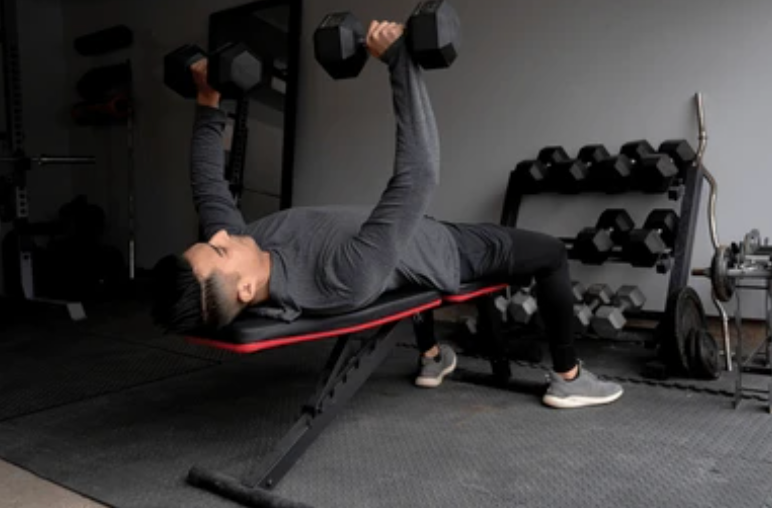
Crafting Your Ideal Garage Gym: Key Equipment to Get Started
Transforming your garage into a fitness haven is an exciting venture. Whether working with a full garage or a half garage home gym, selecting the right equipment is crucial. Here’s a guide to the fundamental gear you’ll need, infused with creative garage gym ideas to maximize your space and workouts.
Power Rack: A Multipurpose Must-Have: The power rack, often the centerpiece in garage gyms, is indispensable. It’s perfect for various strength exercises, including squats and bench presses. A half rack can be a great alternative if you’re tight on space, allowing crucial exercises like pull-ups. It’s a wise investment, especially if you want to do several workouts in a small area.
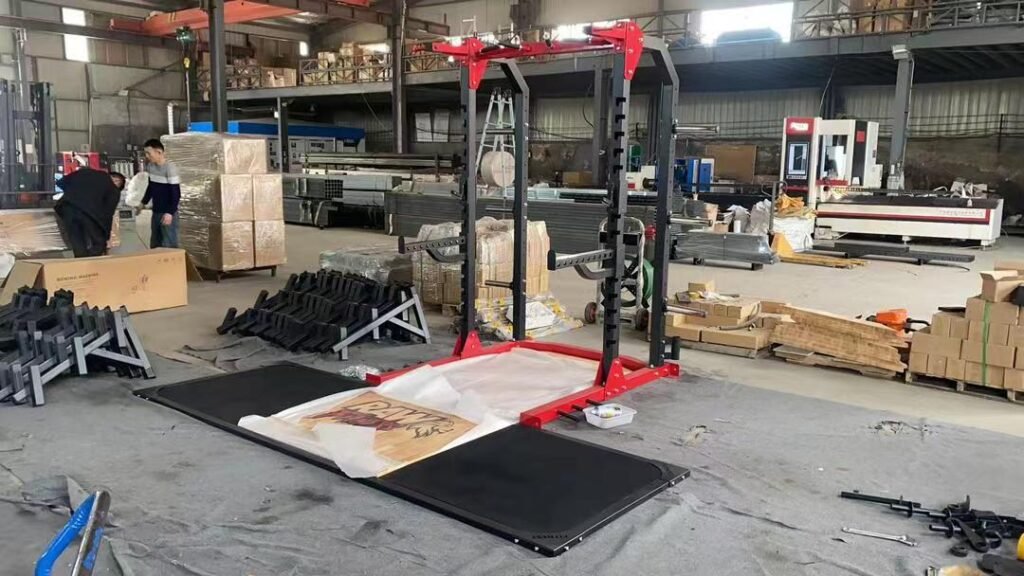
Adjustable Weight Plates: Versatile and Space-Saving: Adjustable weight plates are a savvy choice for garage gyms. They allow you to switch the weight capacity as needed, catering to different exercises and strength levels. This versatility is particularly beneficial in a half-garage gym, where conserving space is critical.
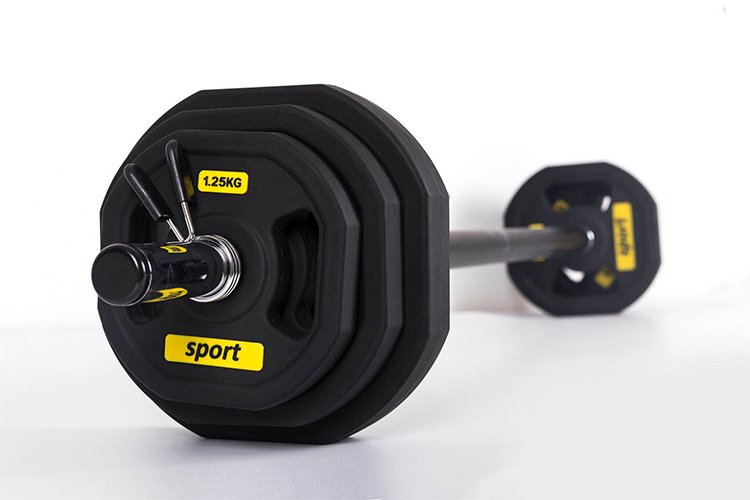
Bench: Your Versatile Workout Partner: An adjustable bar is essential for various exercises, from bench presses to dumbbell rows. It’s a versatile piece of equipment that supports a variety of workouts, making it a top pick for home gyms.
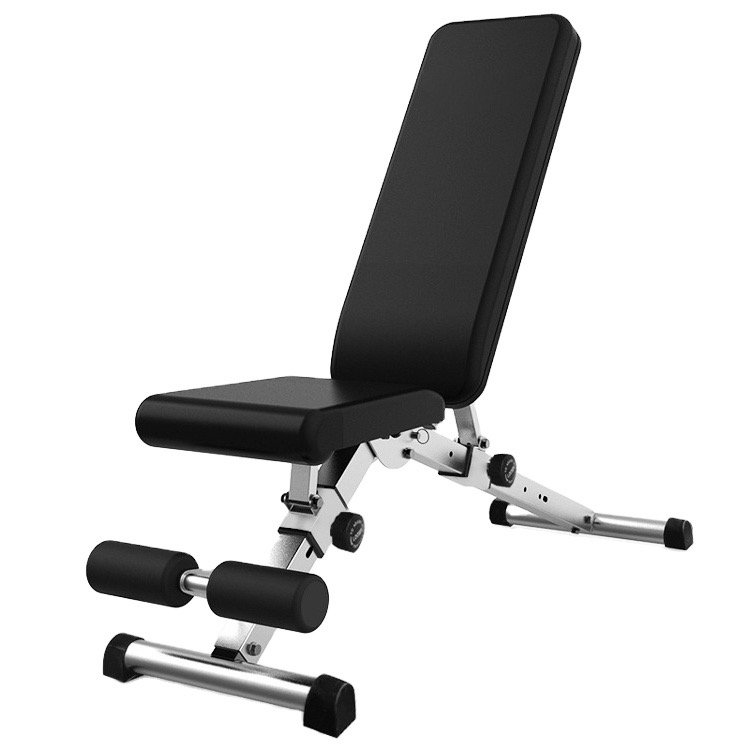
Barbell: The Backbone of Your Gym: A sturdy barbell is a must for fundamental lifts. Opt for one that can handle your desired weight capacity, and if you can, invest in a barbell with J-cups for added versatility and safety.

Dumbbells: Compact and Essential: Dumbbells are a staple for targeted exercises. Consider adjustable dumbbells or a compact rack if you want to save space. They’re perfect for various activities and are a great way to add more equipment to your gym without taking up extra space.
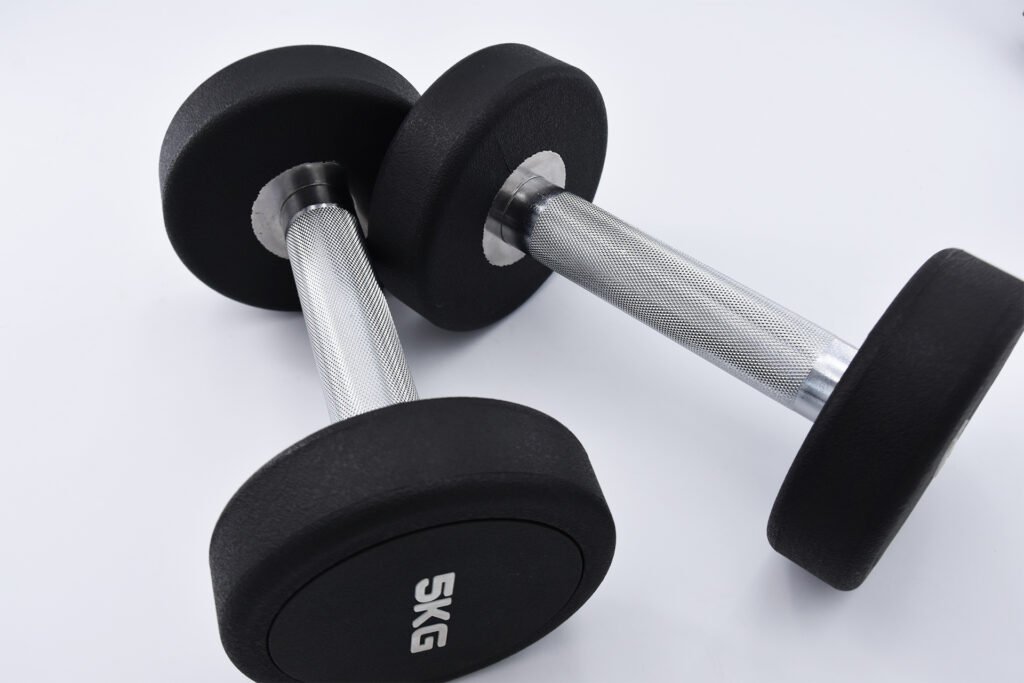
Pull-Up Bar: For Comprehensive Upper Body Workouts: A pull-up bar is essential for upper body strength, easily integrated into your power rack or mounted on the back wall. It’s ideal for pull-ups and other bodyweight exercises, making it a great addition to any garage gym.
Flooring: A Foundation for Safety and Stability: Investing in quality rubber flooring is your best bet for a safe and stable workout area. It protects your equipment and floor and provides a better grip for those heavy lifting sessions.
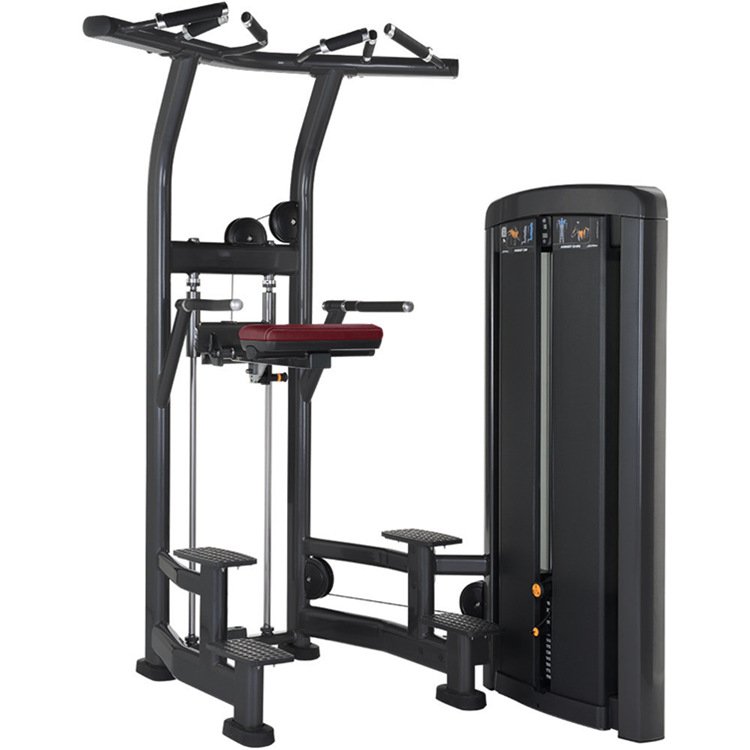
Storage Solutions: Keeping It Tidy: Efficient plate storage is crucial for keeping your weights organized and your workout area safe. A well-organized gym not only looks fantastic but also maximizes your workout space.

Adding Extras for a Full-Body Workout: If you have the extra space and budget, consider adding cardio machines like stationary bikes for a well-rounded fitness routine. Good lighting is also essential, not just for safety but to create an inviting workout environment.
These essentials will set the foundation for a versatile and practical garage gym. Remember, building your home gym can take time and effort. Gradually increase your equipment collection, and soon, you’ll have a personalized fitness space that reflects your workout preferences and goals.
Maximizing Your Garage Gym Space: Smart Layout Strategies
Crafting the perfect layout for your garage gym is crucial for a seamless and practical fitness experience. Let’s explore some innovative garage gym ideas to help you design a space that’s not only functional but also inspiring.
Begin with a Blueprint: Before investing money in equipment, it’s wise to map out your garage gym. Measure your space and consider how each piece of equipment will fit. This planning stage is essential to ensure you’re not overcrowded and can move around safely during your workouts.
Flooring Fundamentals: An essential aspect of your garage gym idea should be the flooring. Opt for durable rubber flooring to protect your equipment and the garage floor. It’s a practical choice that adds a professional look to your gym.
Thoughtful Equipment Arrangement: Position more oversized items like power racks or weight benches against walls to free up central space. This layout allows for various exercises, including those requiring more room, like swinging kettlebells or using resistance bands. If you have adjustable weights, ensure they’re easily accessible but not in the way of your workout flow.
Vertical Space is Your Friend: Don’t overlook vertical storage solutions; pay attention touring more garage gym ideas. Wall-mounted racks for storing metal plates or adjustable dumbbells can be both space-saving and visually appealing. Plus, they keep your workout area clutter-free.
Design a Logical Workout Flow: Organize your equipment to complement your workout routine. For instance, place machines like stationary bikes near the entrance if cardio is your warm-up. This setup not only saves time but also keeps your sessions efficient.
Dedicate Space for Body Movements: Ensure an open area for exercises that don’t require equipment, like yoga or stretching. This space doesn’t need to be extensive but easily accessible and free from clutter.
Choose Multi-Functional Equipment: To maximize space, especially in smaller or half-garage gyms, opt for equipment that serves more than one exercise purpose. Adjustable benches or foldable equipment can be real space savers.
Ambiance Matters: Good lighting is crucial for both safety and atmosphere. Bright, evenly distributed lights make the space more inviting and ensure you can see clearly during your workouts. Consider adding a fan or using a leaf blower to quickly clear out dust or debris, keeping the air fresh.
Safety as a Priority: In your layout planning, always prioritize security. Ensure ample clearance around each piece of equipment, and avoid placing heavy items in pathways or near the garage entrance.
Incorporating these ideas into your garage gym layout makes it look cool and ensures a functional and enjoyable workout environment. Remember, the ultimate goal is to create a space where you’re motivated to achieve your fitness goals efficiently and safely.
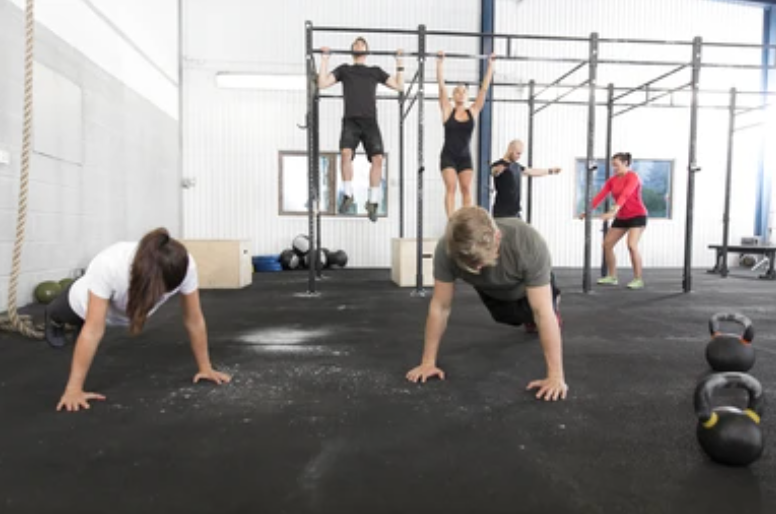
What Are Some Creative Garage Gym Ideas for Small Spaces?
Transforming a small space into an effective workout area can be challenging, but your half-garage or compact size can become a surprisingly versatile gym with some creative thinking. Here are some innovative ideas to maximize your limited space and make every square foot count.
1. Fold-Away Equipment: When space is premium, fold-away or collapsible equipment is a game-changer. Look for foldable squat racks, benches, and even cardio machines that can be tucked away when unused. This approach allows you to transform your space for different workouts or reclaim it for other purposes.
2. Wall-Mounted Solutions: Utilize vertical space with wall-mounted equipment. Pull-up bars, wall-mounted weight plate racks, and even foldable workout benches can free up floor space. This not only keeps your gym organized but also adds to the overall functionality of your small gym setup.
3. Adjustable Dumbbells and Kettlebells: Instead of having a complete set of weights, adjustable dumbbells and kettlebells can save significant space. These versatile pieces allow for various exercises without requiring multiple sets of weights.
4. Use Resistance Bands: Resistance bands are a compact and highly versatile strength training and stretching tool. They can be easily stored in a drawer or hung on the wall, making them perfect for tiny garage gyms.
5. Mirrors to Create Illusion of Space: Installing mirrors can make your small garage gym feel larger and brighter. Mirrors also have the practical benefit of helping you monitor your form during exercises.
6. Efficient Storage Solutions: Optimize storage with shelves, hooks, and bins to keep smaller items like jump ropes, yoga mats, and resistance bands organized. Efficient storage solutions ensure every item has its place, reducing clutter and maximizing workout space.
7. Multi-Use Equipment: Choose equipment that can be used for multiple exercises. For example, a bench can be used for weightlifting and as a plyo box or a barbell that can be incorporated into various strength and conditioning workouts.
8. Opt for Shorter Barbells: Consider shorter barbells or curl bars if a standard barbell takes up too much space. They offer similar functionality but are more suited to smaller areas.
9. Ceiling-Mounted Storage: Remember the ceiling. Mounting storage racks on the top for items like yoga mats or lighter equipment can free up floor and wall space.
10. Corner Shelves for Accessories: Utilize corner spaces with shelves for storing gym accessories like gloves, towels, and water bottles. This keeps essentials at hand without taking up valuable floor space.
These creative ideas can transform even a half-garage into a highly functional and enjoyable workout area. Remember, the key to a successful small garage gym is to focus on versatility and organization, ensuring every inch of space is effectively utilized.
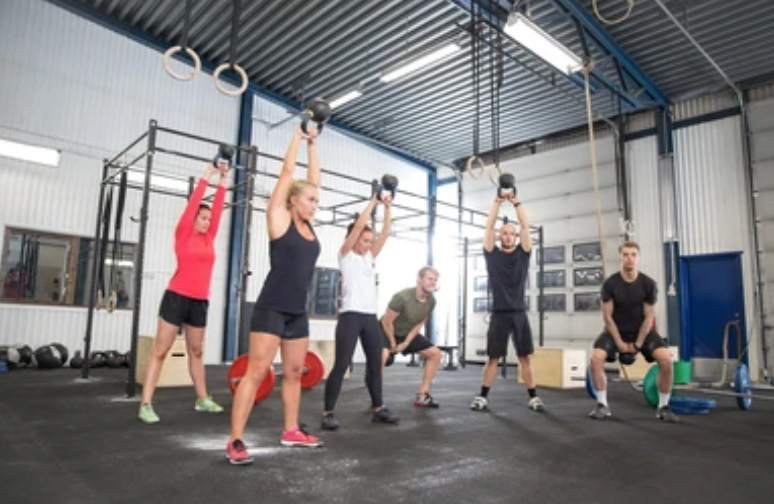
How do you keep your garage gym organized and safe?
Maintaining an organized and safe garage gym is crucial for the efficiency of your workouts and preventing accidents. Here are some practical tips and storage solutions to help you keep your workout space tidy and secure.
1. Invest in Quality Storage Racks: Dumbbell racks are essential for keeping weights off the floor and organized. This not only saves space but also prevents tripping hazards. Similarly, use wall-mounted racks or shelves to store equipment like kettlebells, resistance bands, and weight plates.
2. Utilize Vertical Space: Pay attention to the potential of vertical space. Wall-mounted hooks and shelves can store items like jump ropes, yoga mats, and foam rollers. This approach keeps the floor clear and makes cleaning and moving around easier.
3. Label and Categorize: Organize your equipment by category and consider labeling shelves and racks. This system helps find things quickly and encourages you to put everything back in its place after use.
4. Regular Cleaning: Keep your gym space clean to maintain a safe and hygienic environment. Wipe down equipment after each use, sweep the floor regularly, and use a leaf blower to remove dust and debris from the garage.
5. Secure Heavy Equipment: Ensure that heavy equipment like squat racks and cable machines are anchored to the floor or wall. This is crucial for preventing accidents, especially when performing high-intensity exercises.
6. Clear Pathways: Always keep pathways clear. Ensure enough space to move around comfortably without bumping into equipment. This is important for safety and makes your workouts more efficient.
7. Check Equipment Regularly: Inspect your equipment for wear and tear. Tighten loose bolts, check the condition of resistance bands, and ensure weights are not chipped or cracked. Keeping your equipment in good condition is vital to a safe workout environment.
8. Smart Floor Planning: When setting up your gym, allocate a specific area for each type of workout – a lifting area, a cardio zone, and a stretching or yoga space. This organization minimizes clutter and maximizes safety.
9. Use Transparent Storage Bins: For smaller items like gloves, straps, and chalk, use transparent storage bins. You can easily see and access these items without rummaging through everything.
10. Safety Equipment: Keep safety equipment like a first aid kit and fire extinguisher accessible. It’s always better to be prepared for any emergencies.
By implementing these storage and organization tips, you can ensure your garage gym is a safe, efficient, and enjoyable place to work out. An organized gym looks professional and motivates you to stay consistent with your fitness regime.

Exploring Top Flooring Choices for Garage Gym
Selecting the right flooring is critical in setting up your garage gym. It impacts not only the look and feel of your gym but also its functionality and safety. Let’s compare some of the most popular flooring options, including rubber flooring and horse stall mats, to help you make an informed choice.
1. Rubber Flooring: The All-Rounder: Rubber flooring is a favorite among garage gym enthusiasts. It’s durable, shock-absorbent, and provides excellent grip, reducing the risk of slips and falls. Rubber tiles or rolls are easy to install and maintain, making them a practical choice for any gym setup. They also come in various thicknesses and can be customized to fit any space, ensuring a professional look for your workout area.
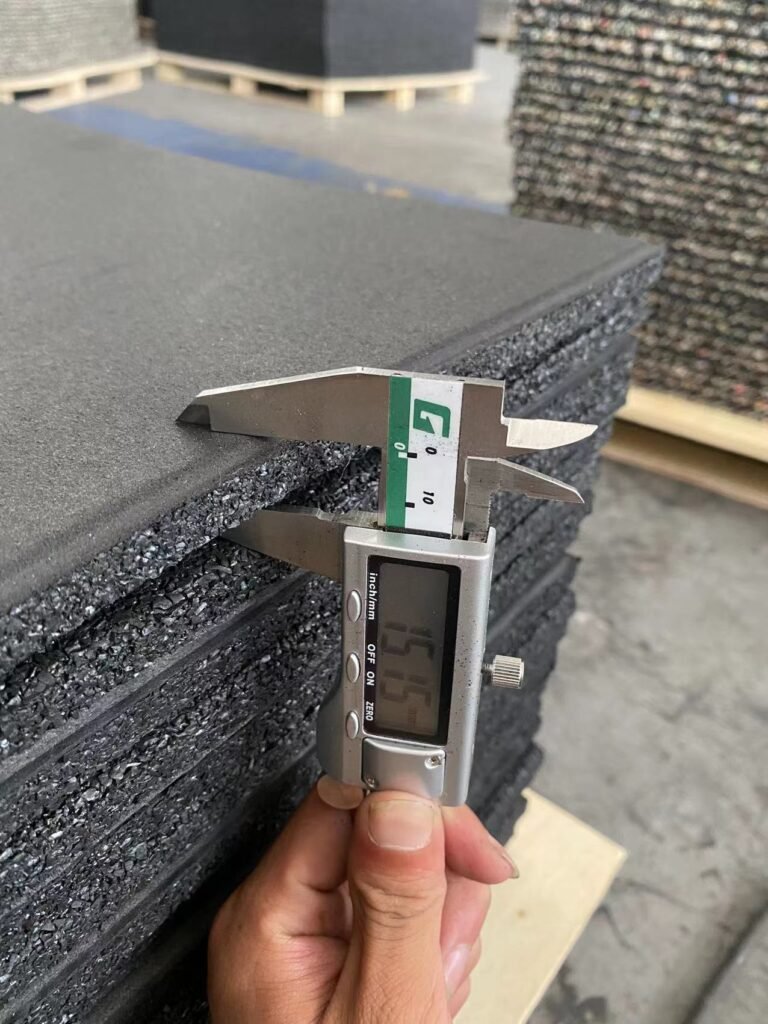
2. Horse Stall Mats: Durable and Cost-Effective: Horse stall mats are a budget-friendly alternative to traditional gym flooring. Initially designed for horse stables, these mats are highly durable and capable of withstanding heavy weights. They’re thicker and denser than regular rubber mats, offering good shock absorption. However, they can be more severe and more challenging to install due to their size and weight.
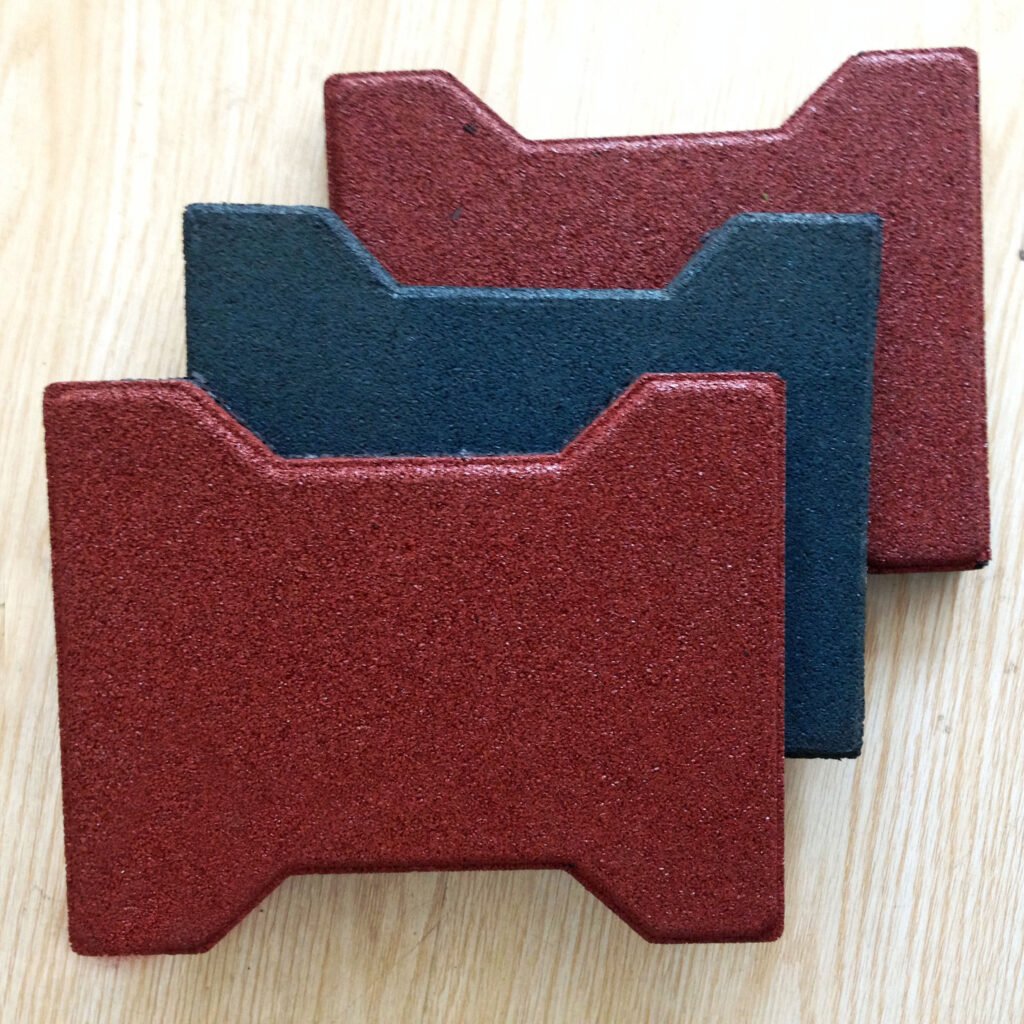
3. Foam Tiles: Comfort and Versatility: Foam tiles are a softer option, ideal for exercises that involve a lot of floor work, like yoga or Pilates. They provide cushioning and are gentle on the joints. While foam tiles are unsuitable for heavy lifting as they can compress under weight, they are an excellent choice for low-impact workout areas.
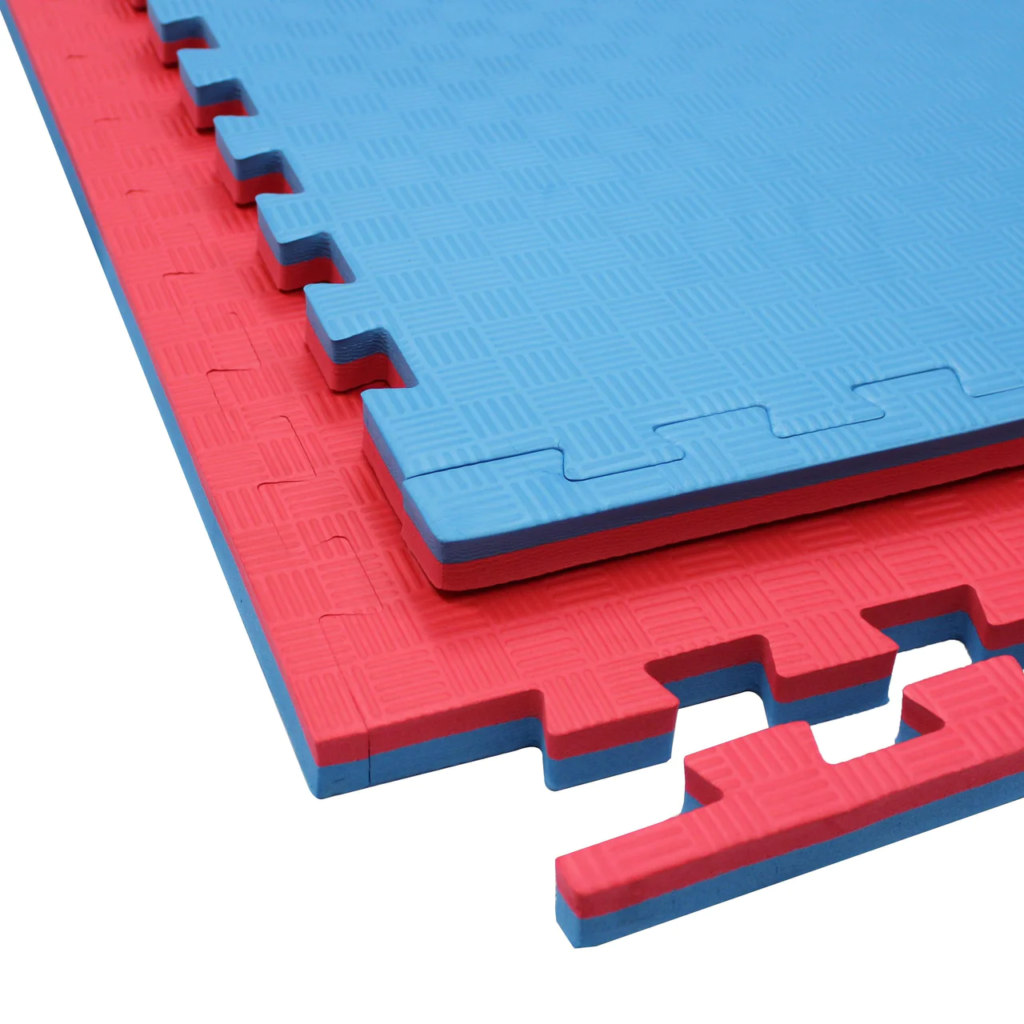
4. Interlocking Rubber Tiles: Easy Installation and Customization: Interlocking tiles are a versatile and user-friendly option. They can be easily fitted together like puzzle pieces, allowing for customization in terms of layout and size. At the same time, they offer good stability and cushioning.

5. Concrete Sealants or Epoxy: Simple and Industrial: If you prefer to keep your garage floor as is, applying a concrete sealant or epoxy coating can be a good option. This doesn’t provide much cushioning or shock absorption but can protect your concrete floor from wear and tear and is easy to clean.
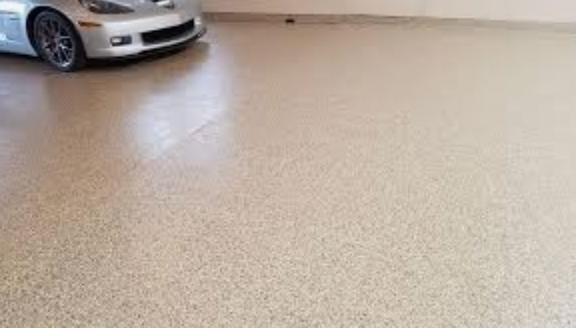
6. Carpet Tiles: Soft and Economical: Carpet tiles can be comfortable and inexpensive, especially for low-impact exercises. They provide a softer surface than rubber but are not ideal for heavy equipment or high-intensity workouts.

Each flooring option comes with its own set of advantages and considerations. Your choice will depend on the types of workouts you plan to do, your budget, and your personal preference for your garage gym’s appearance and feel. Whether you opt for the durability of rubber flooring or the cost-effectiveness of horse stall mats, the right flooring will enhance your workout experience and help protect you and your equipment.
How Can You Maintain a Comfortable Temperature in Your Garage Gym?
Creating a comfortable workout environment in your garage gym is essential for year-round fitness. The challenge often lies in regulating the temperature, as garages are typically designed with insulation different from the rest of the house. Here are some practical solutions for maintaining a pleasant temperature in your garage gym, whether keeping cool during summer or staying warm in the winter.
1. Insulation is Key: Start with insulating your garage. Proper insulation will significantly improve temperature control. This includes insulating garage walls, ceiling, and especially the garage door, often a significant source of heat loss and gain. Insulation helps maintain a comfortable temperature and reduces energy costs if you’re using heating or cooling devices.
2. Portable Air Conditioners: A portable air conditioner can be a lifesaver in a garage gym for hot summer days. These units are great for bringing down the temperature quickly and can be moved around as needed. Ensure you can vent the hot air out of the garage through a window or a specially-made vent.
3. Efficient Heating Solutions: A portable heater can warm up your space in colder months. Electric heaters are a popular choice due to their convenience and efficiency. However, choosing a heater with safety features like automatic shut-off is essential for keeping it away from flammable materials.
4. Ceiling and Floor Fans: Fans are a cost-effective way to circulate air. Ceiling fans can help distribute air evenly throughout the space, while floor fans can direct airflow where it’s most needed. Fans can be particularly effective in hot weather when combined with an open garage door to create a cross breeze.
5. Dehumidifiers for Humidity Control: If humidity is an issue in your garage, consider using a dehumidifier. Excess moisture can make the air feel warmer than it is and can also damage your gym equipment. A dehumidifier will help keep the air dry and comfortable.
6. Weather Stripping and Sealing Gaps: Simple fixes like applying weather stripping around the garage door and sealing gaps and cracks can prevent outside air from entering. This is an easy and inexpensive way to improve temperature control in your garage gym.
7. Use of Thermal Curtains: Thermal curtains can be used to insulate windows in the garage. These curtains help keep heat out during the summer and retain warmth in the winter, contributing to a more stable temperature.
By implementing these solutions, you can create a more comfortable and inviting workout environment in your garage gym, regardless of the weather outside. Remember, a comfortable temperature makes your workouts more enjoyable and can improve your performance and motivation.

Can You Build a Functional Gym in a Small Garage?
Absolutely! Creating a functional gym in a small garage is possible with the right strategies and creativity. The key is to focus on versatile equipment and space-saving ideas that maximize the utility of every inch. Here are some practical tips to help you set up a compact yet comprehensive workout space in your small garage.
1. Choose Multipurpose Equipment: When space is limited, opt for equipment that serves multiple functions. For example, a squat rack with a pull-up bar, an adjustable bench that can be used for various exercises, or a kettlebell set for a full-body workout. This approach reduces the need for multiple pieces of equipment, saving valuable space.
2. Go for Foldable or Collapsible Gear: There are many high-quality, space-saving options available, such as foldable squat racks, collapsible benches, and even treadmills that can be stored vertically. These pieces can be easily packed away when unused, freeing space for other activities.
3. Utilize Wall and Ceiling Space: Install wall-mounted racks for storing weights, bars, and resistance bands. Ceiling-mounted storage solutions can also be great for hanging bikes or other equipment, making the most of your vertical space.
4. Invest in Adjustable Weights: Adjustable dumbbells and barbells are perfect for small spaces. They offer a range of weights in one compact design, eliminating the need for multiple sets of fixed-weight dumbbells or plates.
5. Use Resistance Bands: Resistance bands are versatile and take up little space. They can be used for various exercises that target different muscle groups, making them an ideal addition to a small garage gym.
6. Optimize Floor Space with Interlocking Mats: Use interlocking mats to define your workout area and protect your floor. These can be easily moved or adjusted as needed, depending on your workout for the day.
7. Incorporate Bodyweight Exercises: Remember to underestimate the power of bodyweight workouts. Incorporating exercises like push-ups, sit-ups, and lunges requires no equipment, yet they are highly effective.
8. Get Creative with Storage: Think outside the box for storage solutions. Shelves, hooks, and magnetic strips can store smaller items like gloves, jump ropes, and yoga mats.
9. Mirror Installation: Mirrors make a space look larger and are great for checking your form during exercises. A well-placed mirror can add depth to your small garage gym.
10. Keep It Minimal: Finally, embrace a minimalist approach. Only include equipment that you regularly use. This mindset helps keep your space uncluttered and focused on your fitness goals.
Implementing these strategies allows you to turn a small garage into a highly functional gym. The key is to be thoughtful about the equipment you choose and make the most of your space, ensuring every workout is effective and enjoyable.

How do you ensure proper lighting and ventilation in your garage gym?
Creating a comfortable and safe workout environment in your garage gym involves more than just the right equipment. Proper lighting and ventilation are crucial for both your performance and health. Here’s how to ensure your garage gym has adequate lighting and air circulation.
1. Maximizing Natural Light: Make the most of your garage’s windows. Natural light brightens the space and creates a more inviting atmosphere. Consider using sheer curtains or blinds that allow light in while providing privacy.
2. Installing Adequate Artificial Lighting: Good artificial lighting is essential in garages without windows or for workouts during darker hours. Bright, overhead LED lights are energy-efficient and provide consistent illumination. Ensure the lighting is evenly distributed to avoid shadows or dark spots, which can be a safety hazard.
3. Task Lighting for Specific Areas: In addition to general lighting, consider task lighting in specific areas. For example, a brighter light in the place where you do intricate exercises or where you need to focus on your form, like a weightlifting zone or a stretching corner.
4. Ventilation for Air Quality: Good ventilation is vital to keeping the air in your garage gym fresh and to prevent it from becoming stuffy. Open windows or doors during workouts to allow for a natural airflow.
5. Using Fans for Air Circulation: In garages without adequate natural ventilation, use standing or ceiling fans to help circulate the air. Fans can also cool down the space on warmer days, making your workouts more comfortable.
6. Portable Air Conditioning or Heating Units: Portable air conditioners or heaters can maintain a comfortable workout environment for extreme temperatures. Consider the humidity levels, as high humidity can make the space feel warmer and more uncomfortable.
7. Air Purifiers for Indoor Air Quality: Consider using an air purifier to improve indoor air quality, especially when working out in a closed space. Air purifiers can help reduce dust, pollen, and other airborne pollutants.
8. Dehumidifiers in Humid Climates: In humid areas, a dehumidifier can make your garage gym more comfortable by reducing moisture in the air. This helps with temperature control and prevents rust on your gym equipment.
9. Regular Cleaning to Reduce Dust: Regularly cleaning your garage gym will help maintain good air quality. Dust and vacuum the space frequently, especially if using chalk or other particulates that can become airborne.
Ensuring proper lighting and ventilation in your garage gym creates a more pleasant and healthier environment for your workouts. Good lighting enhances safety and performance, while adequate ventilation keeps the air fresh and comfortable, making your gym an inviting place to achieve your fitness goals.
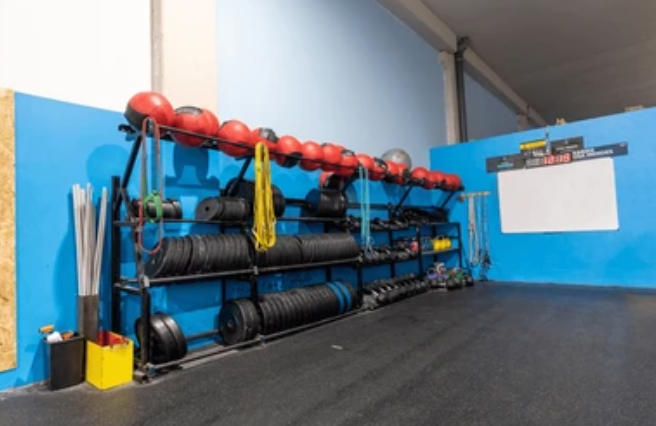
In conclusion, setting up an efficient and enjoyable garage gym is a rewarding endeavor that enhances your fitness journey.
You can transform your garage into a personalized fitness haven by carefully considering aspects like space utilization, flooring, temperature control, equipment selection, lighting, and ventilation.
Remember, balancing functionality with your personal preferences and safety is the key to a successful garage gym. With these thoughtful considerations in place, your garage gym will motivate you to stay consistent with your workouts and provide a comfortable and inviting space to pursue your health and fitness goals.


